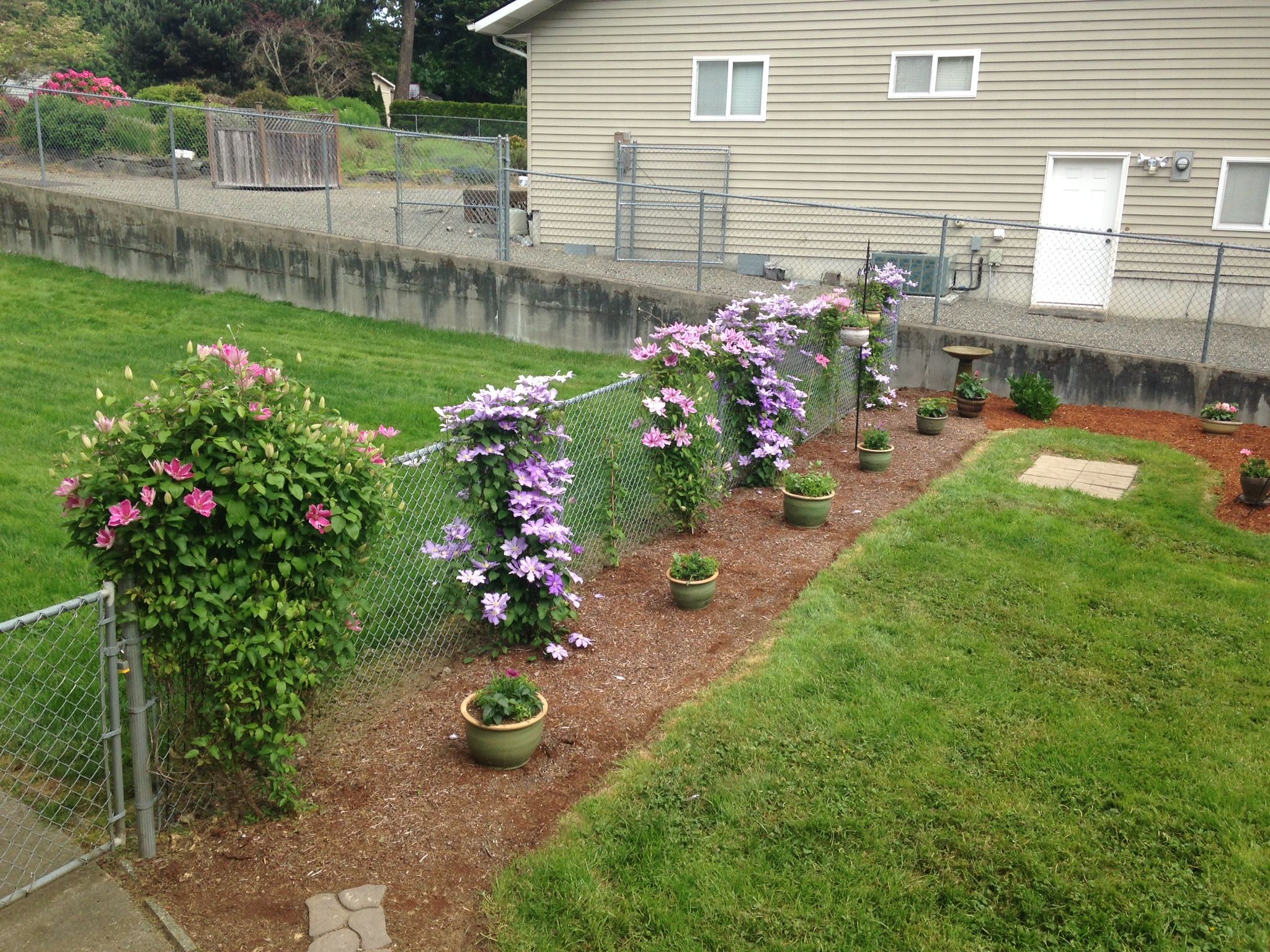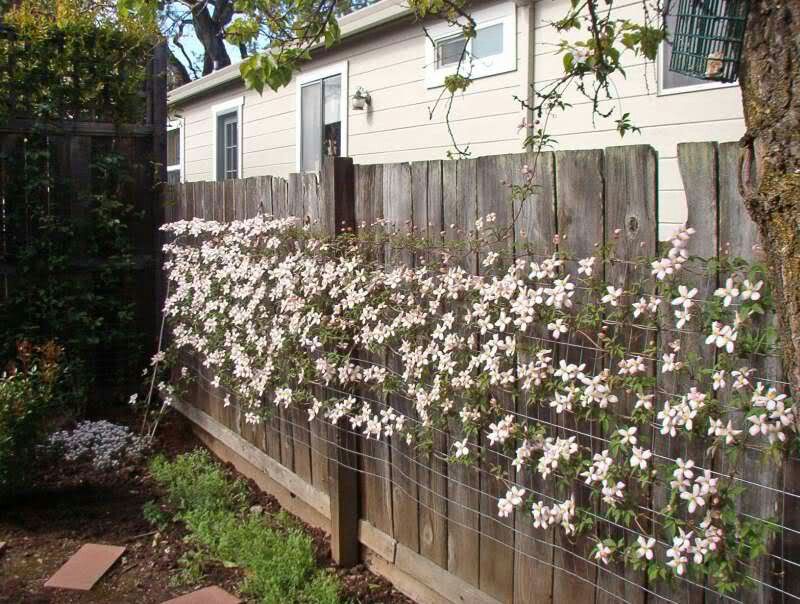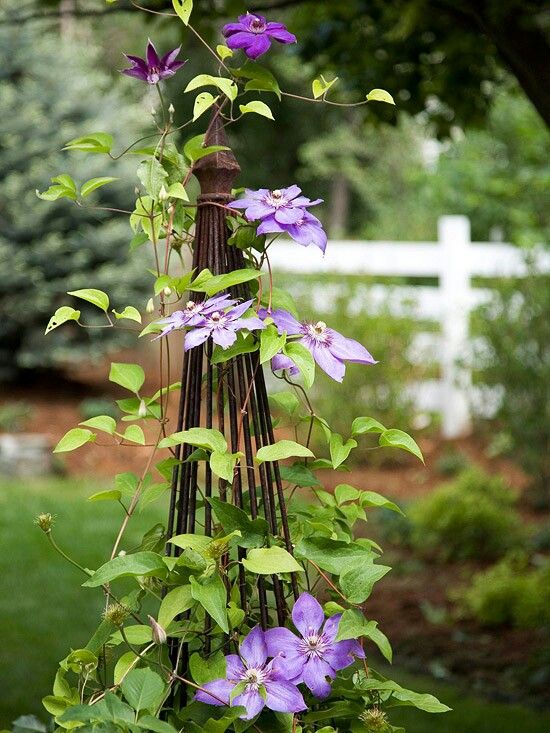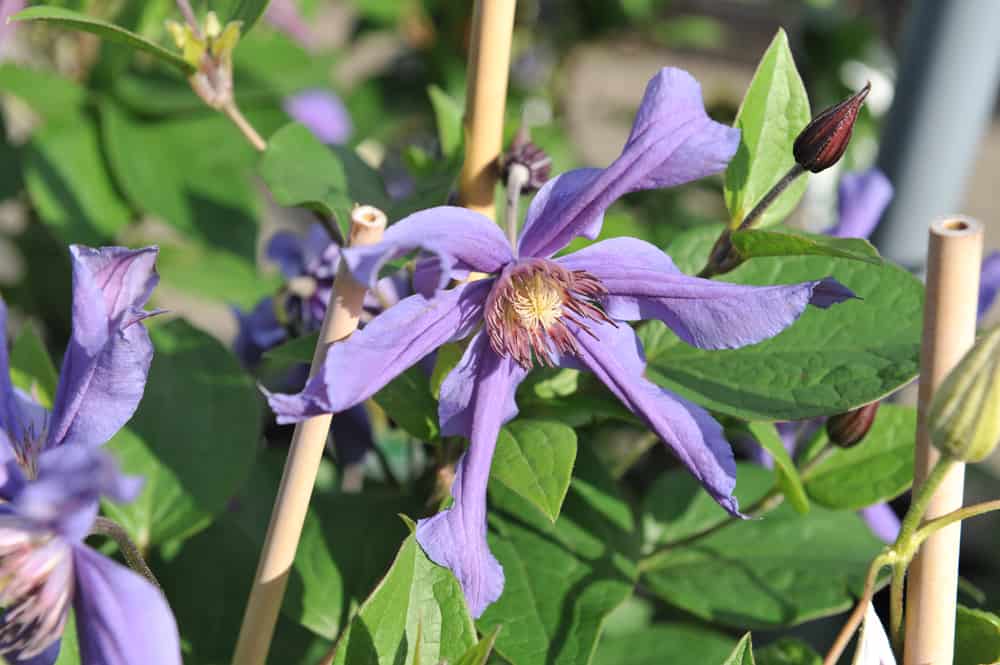How to Train Clematis to Grow Vertically Up Poles or Trees
Clematis, with its exquisite and vibrant blossoms, is a beloved vine that can add a touch of elegance to your garden. To truly make your garden stand out, training clematis to grow vertically up poles or trees is an excellent choice. In this comprehensive guide, we’ll walk you through the steps and techniques to help your clematis thrive while climbing vertically. Whether you’re a seasoned gardener or just starting, our expert tips will ensure your clematis flourishes.
Choosing the Right Clematis Variety

The first step in training clematis to grow vertically is selecting the right variety. Clematis comes in various species, and not all of them are suited for vertical growth. The ideal clematis for this purpose is one with a natural tendency to climb. Look for varieties such as Clematis montana, Clematis armandii, or Clematis jackmanii. These are known for their vigorous climbing habits, making them perfect for your vertical garden.
Providing the Ideal Support Structure

To encourage vertical growth, clematis plants need a sturdy and reliable support structure. Poles and trees can serve as excellent natural support, but you can also use trellises or arbors for added stability. Ensure that the support structure you choose is strong enough to bear the weight of the clematis as it matures.
Planting Clematis Properly

The key to success in training clematis to grow vertically is proper planting. Here are the steps to ensure a strong start for your clematis:
- Select the Right Location: Clematis thrives in well-drained soil and prefers a sunny location. Make sure your chosen spot receives at least six hours of sunlight per day.
- Dig a Hole: Dig a hole that is twice the size of the clematis root ball. Clematis plants like their roots to be shaded, so ensure the hole is deep enough for this purpose.
- Amend the Soil: Mix some organic matter, like compost, into the soil to improve drainage and fertility.
- Plant the Clematis: Place the clematis in the hole, making sure it’s at the same depth as it was in its nursery container.
- Water and Mulch: Water the clematis thoroughly after planting and add a layer of mulch to retain moisture and regulate soil temperature.
Training Techniques

Training clematis to grow vertically involves guiding the plant to follow your desired path. Here are some effective techniques:
- Tying the Stems: Gently tie the clematis stems to the support structure using soft garden twine. Avoid using materials that may damage the delicate vines.
- Pruning: Regular pruning is crucial to maintain a neat and healthy clematis. Prune in late winter or early spring before new growth begins. Remove any dead or weak stems to encourage new growth.
- Training Horizontally: In the initial stages, training clematis horizontally can promote more lateral growth. Once the plant is established, you can guide it vertically.
- Providing Guidance: Clematis may not naturally attach themselves to the support structure, so you may need to gently guide the vines as they grow.
Regular Maintenance

Caring for your vertically growing clematis involves routine maintenance to ensure it thrives and continues to produce beautiful blooms. Here’s what you should do:
- Watering: Clematis prefers consistently moist but not waterlogged soil. Water your plant regularly, especially during dry spells.
- Fertilizing: Apply a balanced, slow-release fertilizer in spring to provide essential nutrients for growth.
- Mulching: Renew the mulch layer around your clematis to retain moisture and suppress weeds.
- Pest and Disease Control: Keep an eye out for common clematis pests like aphids and caterpillars. Address any issues promptly to prevent damage.
- Support Maintenance: Periodically check the support structure to ensure it remains stable and secure.
FAQs
Q1: How long does it take for clematis to reach its full height?
A1: The time it takes for clematis to reach its full height can vary depending on the variety and growing conditions. However, most clematis plants will reach their maximum height within two to three years.
Q2: Can I grow clematis indoors in a pot?
A2: Yes, you can grow clematis in a pot indoors. Choose a compact or dwarf variety, provide a suitable support, and ensure it receives adequate sunlight. Regular pruning and care are essential for indoor clematis.
Q3: When is the best time to prune clematis for vertical growth?
A3: The best time to prune clematis for vertical growth is in late winter or early spring before new growth starts. This allows you to remove dead or weak stems and shape the plant for the upcoming growing season.
Q4: Can I plant clematis near other climbing plants?
A4: Yes, you can plant clematis near other climbing plants, but it’s important to consider their specific requirements. Ensure that they have enough space and support, and choose companion plants that have similar sun and water needs.
In conclusion, training clematis to grow vertically up poles or trees can transform your garden into a stunning display of vibrant colors and lush greenery. By selecting the right clematis variety, providing a robust support structure, and following proper planting and training techniques, you can ensure the success of your vertical clematis garden. With regular maintenance and care, you’ll be rewarded with a breathtaking botanical masterpiece in no time.
tag
- chicken feed
- how to Keep Chickens Off Your Porch
- How to grow oyster mushrooms at home
- Growing Kale in Pots


0 Comments